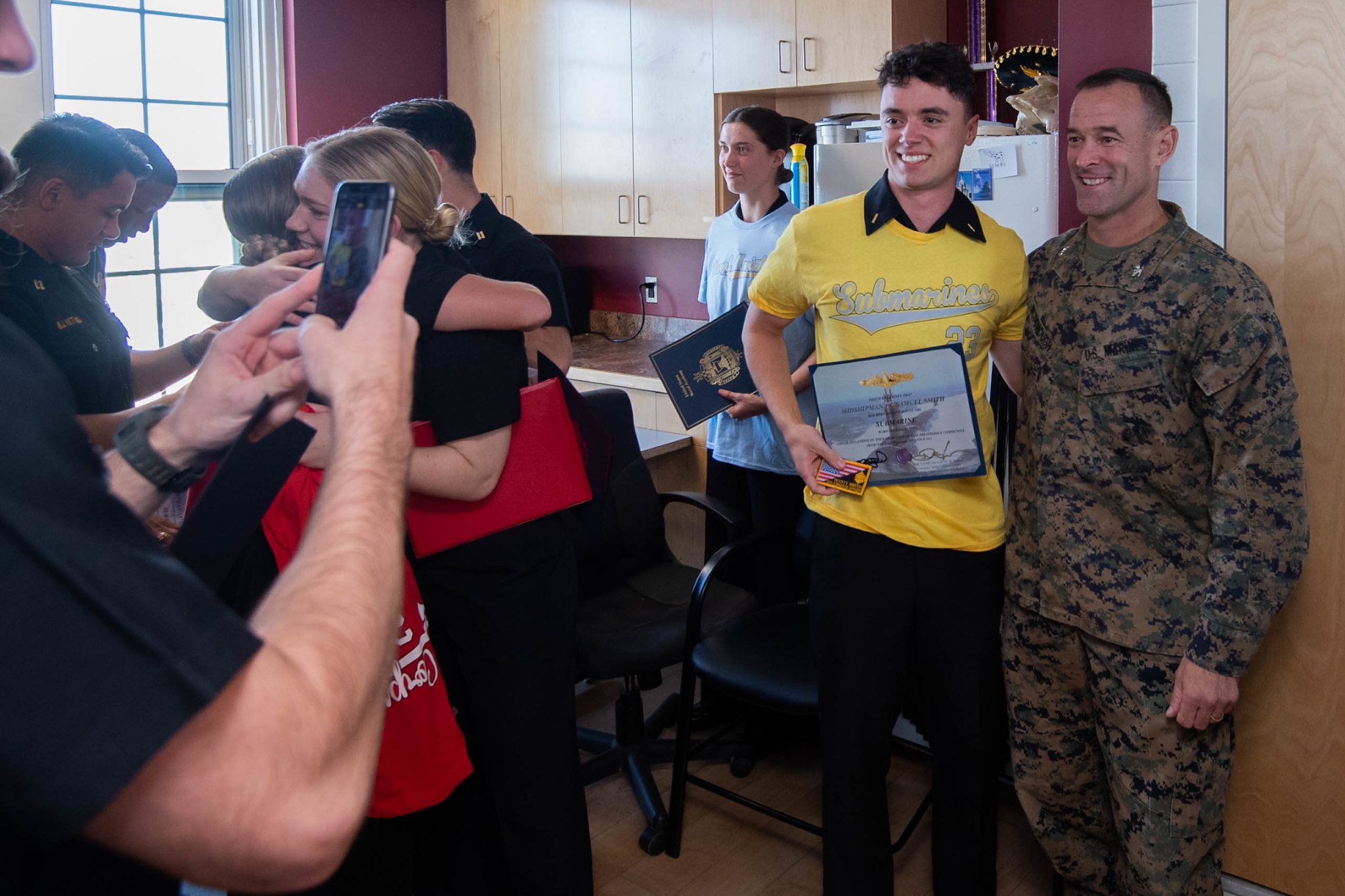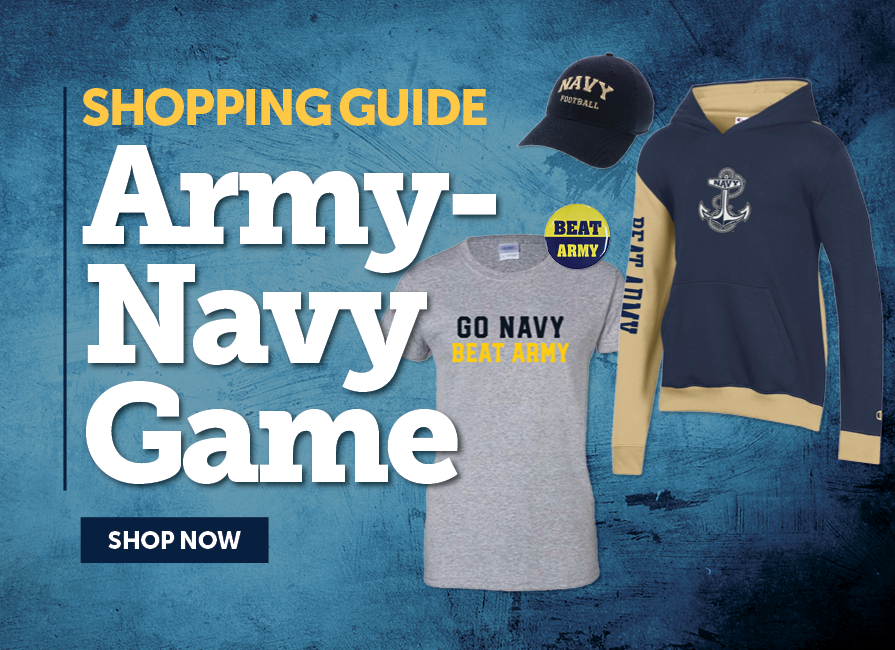
Each year, the U.S. Naval Academy graduates about 1,000 midshipmen. After four years of tireless dedication to the mental, physical and moral missions of the Academy, these intrepid young women and men are ready to take on the next level of responsibility and further their military careers with USNA service assignments in the U.S. Navy or the U.S. Marine Corps. This blog series explores the various career paths they can pursue in the U.S. Naval Fleet, including as surface warfare officers (SWOs), nuclear power—surface, naval aviation, submarine warfare, naval special warfare and with the U.S. Marine Corps, among others. Here, we’ll dive into the world of Navy submarines.
Related: Career Opportunities for USNA Graduates
A Great Adventure
In the Class of 2023, 136 midshipmen were assigned to Navy submarine commissions. These officers will embark on a great adventure, working with many of the best leaders in the military and operating some of the most cutting-edge technology available. Ultimately, they’re training to take charge of one of the critical arms of the Fleet and will be responsible for vessels worth about $1.5 billion. Those selected to lead nuclear submarines are of the highest caliber. As their site explains, “Submarine Officers work to understand and destroy America’s peer adversaries! Their job demands technical prowess, confidence and competence.”
As you’d expect, submarines are designed for secretive missions, and thus the officer must ensure information stays classified to protect our national security. Not only are they required to maintain this secrecy, but they must also be ready to do jobs most people can’t even fathom. This is where mental acuity, physical prowess and sheer determination make the difference.
Related: 120th Submarine Birthday Ball
Training First
Navy submariners understand the importance of thorough training. Since all of the U.S. Navy’s submarines are nuclear powered, newly commissioned ensigns learn the intricacies of nuclear propulsion by attending the Nuclear Power School in Charleston, South Carolina, for a six month session. They will continue their training in either Charleston or Ballston Spa, New York, where the two nuclear reactor prototypes are located. Following this, they attend Navy Submarine School in New London, Connecticut, for the ten-week Submarine Officers Basic Course. Then they’re off to the open ocean, where they’ll complete their first tour of duty on an attack, ballistic missile or guided missile submarine over the course of about 36 months.
These are all critical milestones on the way towards earning the gold dolphins and designation as a Navy submarine officer, widely considered to be some of the most well respected and trained officers in the Navy. From the beginning, junior officers jump in head first. They’re immediately responsible for leading small divisions of about ten to twenty sailors with roles in essential areas of operations, including engineering, weapons and communications. They stand watch and train hard to qualify as engineering officer of the watch, diving officer of the watch and officer of the deck. They are also the trusted leaders who devise and deploy secret missions that protect our country.
As they gain more responsibility, these nuclear submarine officers take on important wide-ranging duties, as they oversee everything related to driving, powering, arming and operating the Navy’s Fleet of attack, ballistic missile and guided missile submarines. Submarines can be as large as surface ships, but since they contain so much equipment, their personnel counts are much smaller with between 120 - 140 sailors. Thus, all must be able to multitask well, and each day is very different.
World Travelers
The roles of the submarine can vary. Since they travel places so many vessels can’t, they can traverse the world while maintaining near autonomy, tackling challenges simply not possible for other vessels. For instance, they can surface through the ice at the North Pole and handle Arctic conditions. They also surface at ports all around the world, including Norway, Australia, Japan and more. They have home ports at bases from San Diego, California, to Norfolk, Virginia, to Pearl Harbor, Hawaii. “The submarine force is the last bastion of Master and Commander in the fleet,” notes their site. As you might imagine, this working environment engenders a real esprit de corps and strong sense of camaraderie and respect.
Deployment Time
Most subs are stationed for long periods of time in their home ports to conduct National Tasking training. Then they often go on deployments for three or six months at a time, a shorter period than surface ships since they have less space to store supplies and the nature of their duties requires shorter trips. Generally, ballistic missile submarines (SSBN) have a three month patrol and fast-attack or guided missile submarines (SSN/SSGN) have a six month deployment. A submarine officer will be with their submarine for three years, and will then be on shore duty for two to three years. They will rotate like this throughout their career.
State-of-the-Art Vessels
U.S. Navy nuclear submarines are state-of-the-art. In fact, they’re some of the most advanced, secretive vessels in the entire U.S. Naval Fleet and in the world, successfully completing missions with stealth technology and advanced warfare capabilities, and mastering conflict engagement and deterrence. Here are the three types of vessels:
- Ballistic Missile Submarines (SSBN): Known as "Boomers," these play a critical role in national security with strategic nuclear deterrence. Built to operate underwater for months on end, SSBN submariners must be able to work well together in any scenario. While they can use torpedoes for their own defense, their collective work for our country is invaluable.
- Attack Submarines (SSN): There are three classes: the Los Angeles, Seawolf and Virginia. They handle seek-and-destroy missions on enemy ships and subs, surveillance and reconnaissance, irregular warfare, covert troop insertion, mine and anti-mine operations and other important roles. These sleek and stealthy subs also use Tomahawk cruise missiles to strike targets from far away.
-
Guided Missile Submarines (SSGN): These were designed to complement the powerful cruiser and destroyer guided-missile platforms with a stealth component.
Onward Ho!
We’re excited to be the launching pad for so many successful U.S. Navy and U.S. Marine Corps careers. The midshipmen that study here today will be tomorrow’s exceptional leaders, maintaining our military’s reputation as the most powerful in the world. Did you know you can support these future Navy submariners with more than just your Go Navy Beat Army spirit (although that is highly encouraged)? Every time you take a USNA Tour, dine in our Yard restaurants, or shop at the Midshipmen Store, USNA Gift Shop or at Navyonline.com, you’re helping to support the midshipmen as they prepare to take on more responsibilities. These proceeds fund the extracurricular activities like cultural arts, theater, music, club sports and more that they love so well. So come visit or shop online and support those who support our freedom. To them we say, “Full Speed Ahead!”






